Tarun Krishna
Reinforcement Learning meets Masked Video Modeling : Trajectory-Guided Adaptive Token Selection
May 13, 2025Abstract:Masked video modeling~(MVM) has emerged as a highly effective pre-training strategy for visual foundation models, whereby the model reconstructs masked spatiotemporal tokens using information from visible tokens. However, a key challenge in such approaches lies in selecting an appropriate masking strategy. Previous studies have explored predefined masking techniques, including random and tube-based masking, as well as approaches that leverage key motion priors, optical flow and semantic cues from externally pre-trained models. In this work, we introduce a novel and generalizable Trajectory-Aware Adaptive Token Sampler (TATS), which models the motion dynamics of tokens and can be seamlessly integrated into the masked autoencoder (MAE) framework to select motion-centric tokens in videos. Additionally, we propose a unified training strategy that enables joint optimization of both MAE and TATS from scratch using Proximal Policy Optimization (PPO). We show that our model allows for aggressive masking without compromising performance on the downstream task of action recognition while also ensuring that the pre-training remains memory efficient. Extensive experiments of the proposed approach across four benchmarks, including Something-Something v2, Kinetics-400, UCF101, and HMDB51, demonstrate the effectiveness, transferability, generalization, and efficiency of our work compared to other state-of-the-art methods.
An accurate detection is not all you need to combat label noise in web-noisy datasets
Jul 08, 2024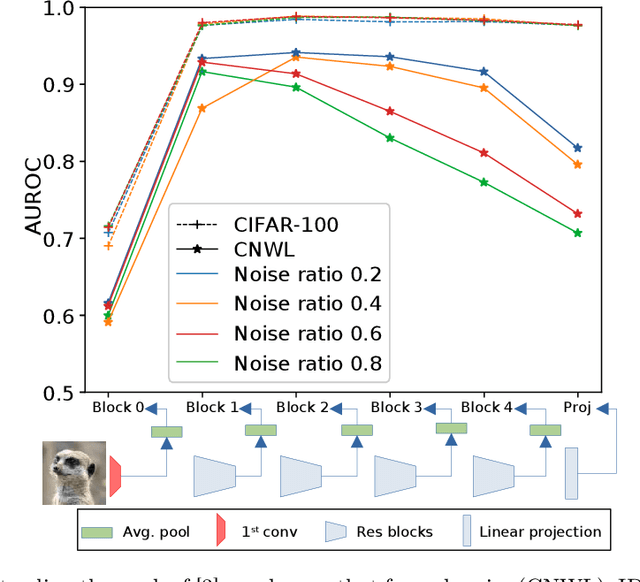
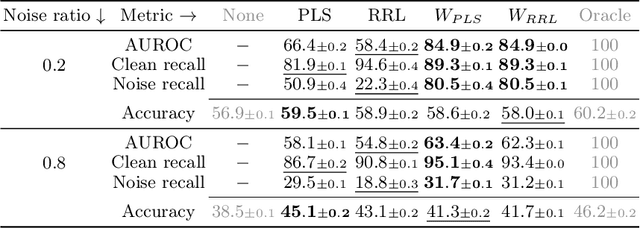

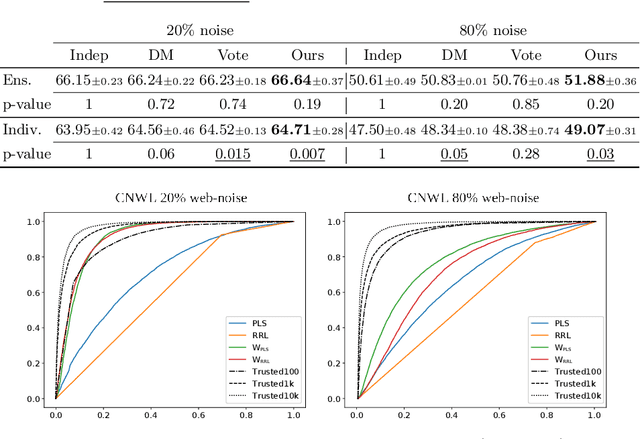
Abstract:Training a classifier on web-crawled data demands learning algorithms that are robust to annotation errors and irrelevant examples. This paper builds upon the recent empirical observation that applying unsupervised contrastive learning to noisy, web-crawled datasets yields a feature representation under which the in-distribution (ID) and out-of-distribution (OOD) samples are linearly separable. We show that direct estimation of the separating hyperplane can indeed offer an accurate detection of OOD samples, and yet, surprisingly, this detection does not translate into gains in classification accuracy. Digging deeper into this phenomenon, we discover that the near-perfect detection misses a type of clean examples that are valuable for supervised learning. These examples often represent visually simple images, which are relatively easy to identify as clean examples using standard loss- or distance-based methods despite being poorly separated from the OOD distribution using unsupervised learning. Because we further observe a low correlation with SOTA metrics, this urges us to propose a hybrid solution that alternates between noise detection using linear separation and a state-of-the-art (SOTA) small-loss approach. When combined with the SOTA algorithm PLS, we substantially improve SOTA results for real-world image classification in the presence of web noise github.com/PaulAlbert31/LSA
Video Anomaly Detection via Spatio-Temporal Pseudo-Anomaly Generation : A Unified Approach
Nov 27, 2023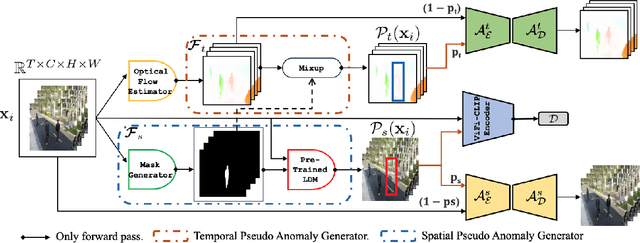
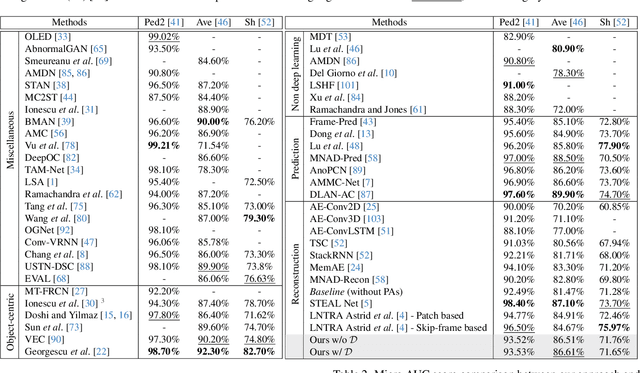
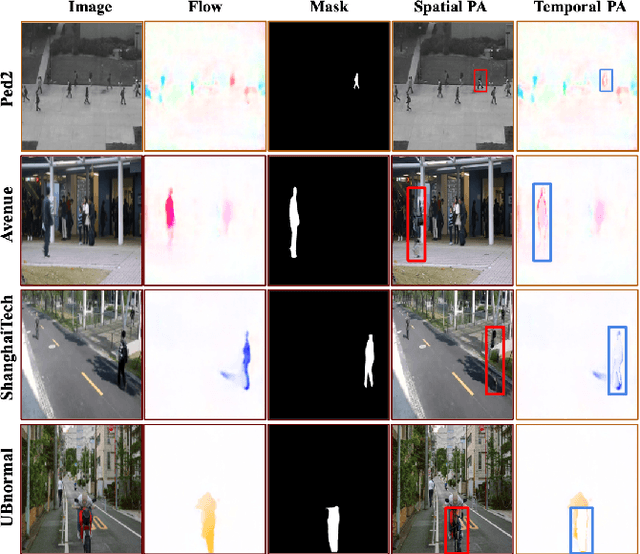

Abstract:Video Anomaly Detection (VAD) is an open-set recognition task, which is usually formulated as a one-class classification (OCC) problem, where training data is comprised of videos with normal instances while test data contains both normal and anomalous instances. Recent works have investigated the creation of pseudo-anomalies (PAs) using only the normal data and making strong assumptions about real-world anomalies with regards to abnormality of objects and speed of motion to inject prior information about anomalies in an autoencoder (AE) based reconstruction model during training. This work proposes a novel method for generating generic spatio-temporal PAs by inpainting a masked out region of an image using a pre-trained Latent Diffusion Model and further perturbing the optical flow using mixup to emulate spatio-temporal distortions in the data. In addition, we present a simple unified framework to detect real-world anomalies under the OCC setting by learning three types of anomaly indicators, namely reconstruction quality, temporal irregularity and semantic inconsistency. Extensive experiments on four VAD benchmark datasets namely Ped2, Avenue, ShanghaiTech and UBnormal demonstrate that our method performs on par with other existing state-of-the-art PAs generation and reconstruction based methods under the OCC setting. Our analysis also examines the transferability and generalisation of PAs across these datasets, offering valuable insights by identifying real-world anomalies through PAs.
Unifying Synergies between Self-supervised Learning and Dynamic Computation
Jan 22, 2023



Abstract:Self-supervised learning (SSL) approaches have made major strides forward by emulating the performance of their supervised counterparts on several computer vision benchmarks. This, however, comes at a cost of substantially larger model sizes, and computationally expensive training strategies, which eventually lead to larger inference times making it impractical for resource constrained industrial settings. Techniques like knowledge distillation (KD), dynamic computation (DC), and pruning are often used to obtain a lightweight sub-network, which usually involves multiple epochs of fine-tuning of a large pre-trained model, making it more computationally challenging. In this work we propose a novel perspective on the interplay between SSL and DC paradigms that can be leveraged to simultaneously learn a dense and gated (sparse/lightweight) sub-network from scratch offering a good accuracy-efficiency trade-off, and therefore yielding a generic and multi-purpose architecture for application specific industrial settings. Our study overall conveys a constructive message: exhaustive experiments on several image classification benchmarks: CIFAR-10, STL-10, CIFAR-100, and ImageNet-100, demonstrates that the proposed training strategy provides a dense and corresponding sparse sub-network that achieves comparable (on-par) performance compared with the vanilla self-supervised setting, but at a significant reduction in computation in terms of FLOPs under a range of target budgets.
Motion Aware Self-Supervision for Generic Event Boundary Detection
Oct 12, 2022
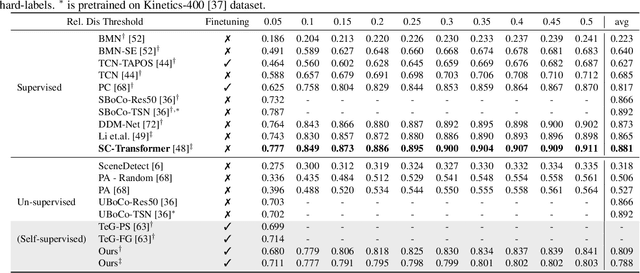

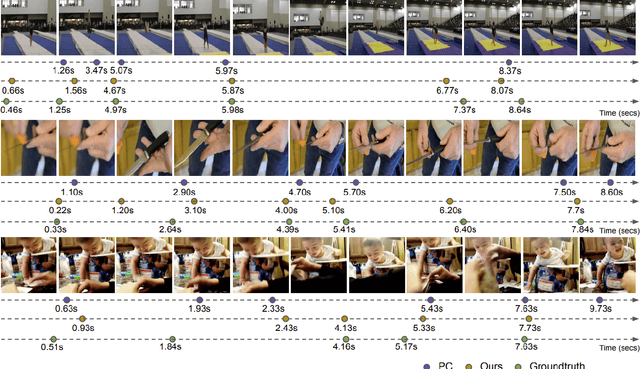
Abstract:The task of Generic Event Boundary Detection (GEBD) aims to detect moments in videos that are naturally perceived by humans as generic and taxonomy-free event boundaries. Modeling the dynamically evolving temporal and spatial changes in a video makes GEBD a difficult problem to solve. Existing approaches involve very complex and sophisticated pipelines in terms of architectural design choices, hence creating a need for more straightforward and simplified approaches. In this work, we address this issue by revisiting a simple and effective self-supervised method and augment it with a differentiable motion feature learning module to tackle the spatial and temporal diversities in the GEBD task. We perform extensive experiments on the challenging Kinetics-GEBD and TAPOS datasets to demonstrate the efficacy of the proposed approach compared to the other self-supervised state-of-the-art methods. We also show that this simple self-supervised approach learns motion features without any explicit motion-specific pretext task.
Dynamic Channel Selection in Self-Supervised Learning
Jul 25, 2022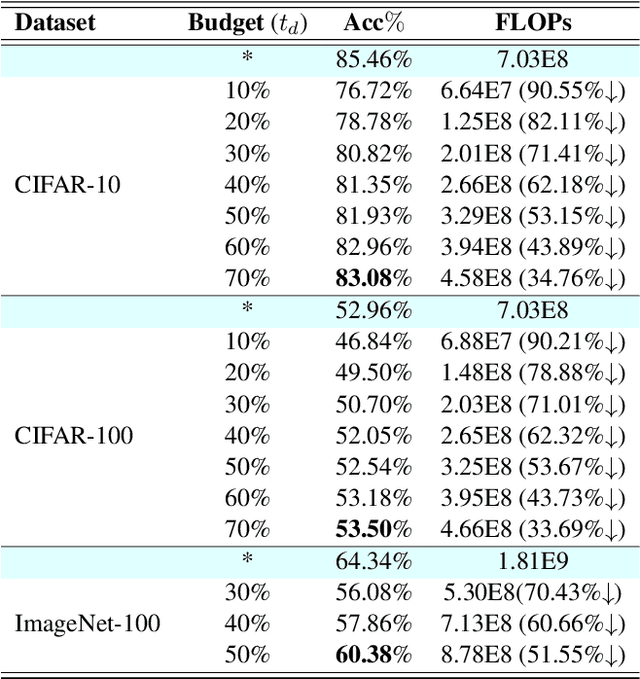
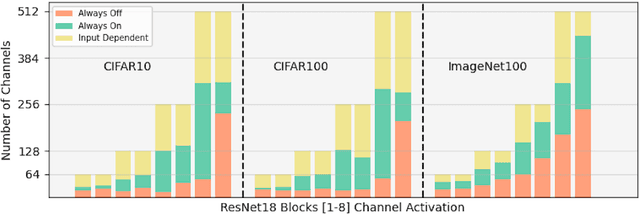
Abstract:Whilst computer vision models built using self-supervised approaches are now commonplace, some important questions remain. Do self-supervised models learn highly redundant channel features? What if a self-supervised network could dynamically select the important channels and get rid of the unnecessary ones? Currently, convnets pre-trained with self-supervision have obtained comparable performance on downstream tasks in comparison to their supervised counterparts in computer vision. However, there are drawbacks to self-supervised models including their large numbers of parameters, computationally expensive training strategies and a clear need for faster inference on downstream tasks. In this work, our goal is to address the latter by studying how a standard channel selection method developed for supervised learning can be applied to networks trained with self-supervision. We validate our findings on a range of target budgets $t_{d}$ for channel computation on image classification task across different datasets, specifically CIFAR-10, CIFAR-100, and ImageNet-100, obtaining comparable performance to that of the original network when selecting all channels but at a significant reduction in computation reported in terms of FLOPs.
Discerning Generic Event Boundaries in Long-Form Wild Videos
Jun 18, 2021
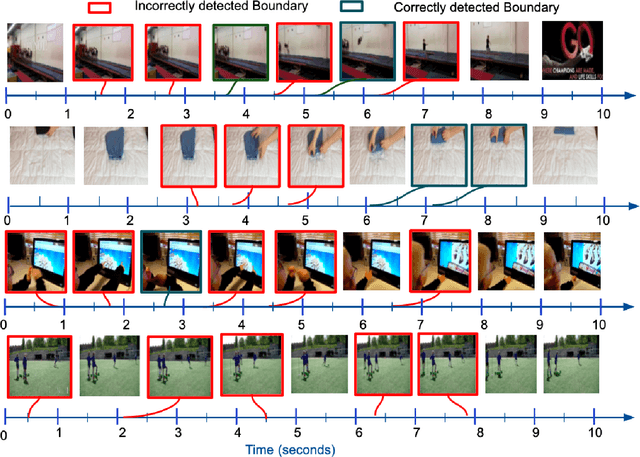
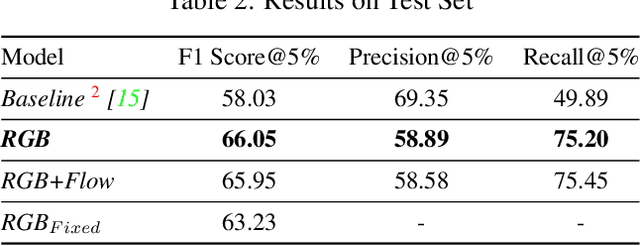
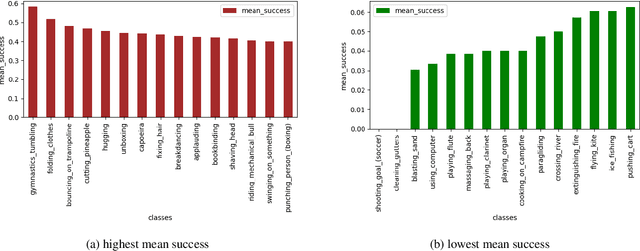
Abstract:Detecting generic, taxonomy-free event boundaries invideos represents a major stride forward towards holisticvideo understanding. In this paper we present a technique forgeneric event boundary detection based on a two stream in-flated 3D convolutions architecture, which can learn spatio-temporal features from videos. Our work is inspired from theGeneric Event Boundary Detection Challenge (part of CVPR2021 Long Form Video Understanding- LOVEU Workshop).Throughout the paper we provide an in-depth analysis ofthe experiments performed along with an interpretation ofthe results obtained.
Evaluating Contrastive Models for Instance-based Image Retrieval
Apr 30, 2021


Abstract:In this work, we evaluate contrastive models for the task of image retrieval. We hypothesise that models that are learned to encode semantic similarity among instances via discriminative learning should perform well on the task of image retrieval, where relevancy is defined in terms of instances of the same object. Through our extensive evaluation, we find that representations from models trained using contrastive methods perform on-par with (and outperforms) a pre-trained supervised baseline trained on the ImageNet labels in retrieval tasks under various configurations. This is remarkable given that the contrastive models require no explicit supervision. Thus, we conclude that these models can be used to bootstrap base models to build more robust image retrieval engines.
 Add to Chrome
Add to Chrome Add to Firefox
Add to Firefox Add to Edge
Add to Edge